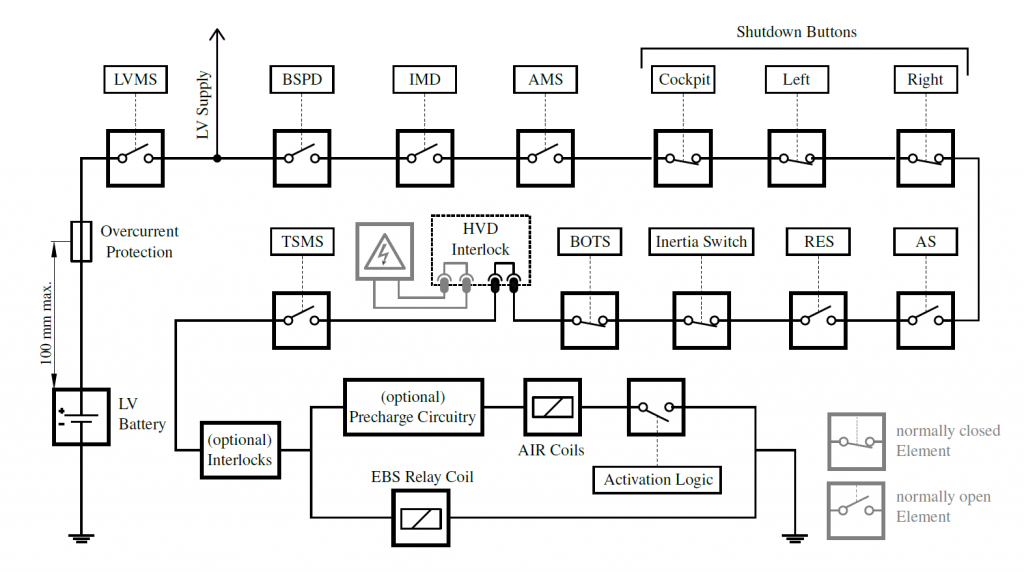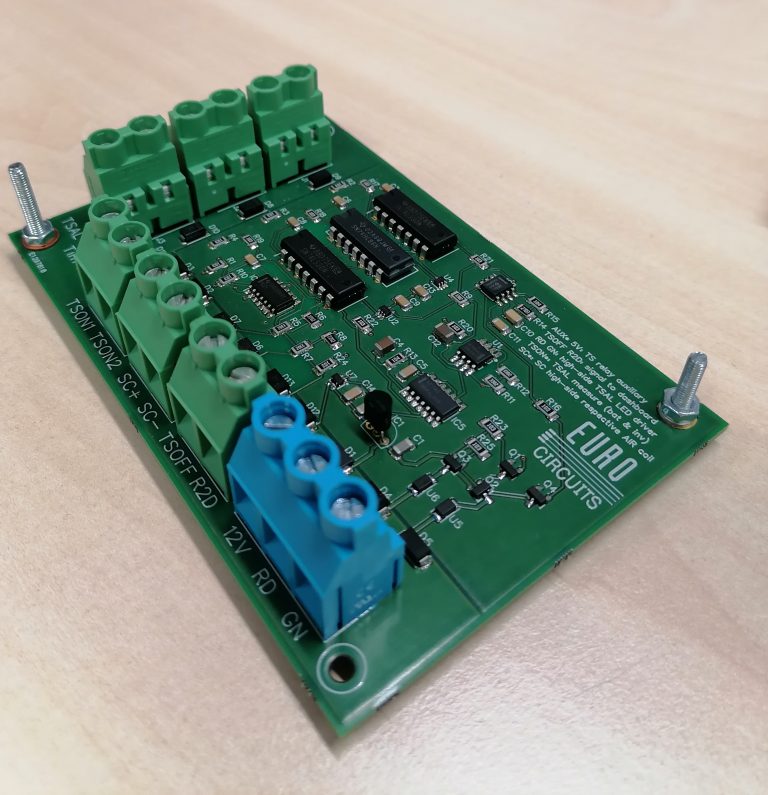
A very important part of the electrical system is the shutdown circuit. If something happens that isn’t supposed to happen, the shutdown circuit will get notified and shut down the vehicle. To make this shutdown circuit, we make use of different sensors, switches and PCB’s.
To start the electrical system there is a low voltage (LV) battery. This will supply the shutdown circuit with the necessary current. The first block in the circuit is the LVMS, or Low voltage master switch. This is a physical switch on the side of the car that is turned on when starting the vehicle to allow the current to flow to the rest of the shutdown circuit and the rest of the low voltage system.
The second block is the BSPD, or Brake System
Plausibility Device. This device monitors faults in the braking system. If braking goes wrong, it will automatically shut down the circuit. After that,
you can see the IMD, or Insulation monitoring device, and the AMS, Accumulator management system. The IMD continuously checks if the value of the insulation
resistance falls below a response level. If so, the system will shut down. The AMS checks if anything is wrong with the cells of the accumulator container, and again, if anything is wrong it will shut down the system.

On the car are three shutdown buttons. These are physical emergency buttons that can be pushed by people around or inside the car to shut down the circuit. There is one button inside the cockpit and one on the left and right side of the car.
AS and RES, Autonomous system and Remote emergency system, are systems that come from the driverless systems of the car. If anything goes wrong in the driverless systems, these PCB’s will get that feedback and are able to shut down the entire vehicle.
If the car crashes and thus decelerates at an abnormal amount the Inertia switch will get activated and it will shut off the systems. BOTS, or Brake over-travel switch, will get activated when the brake paddle breaks. There is a switch behind the brake paddle, which it isn’t able to reach when fully intact. When broken the brake paddle will exceed the regular travel distance and activate the switch.
TSMS, or Tractive system master switch, is a switch that needs to be turned on when starting the car to allow the current to flow through the rest of the circuit. The AIR Coils, or the Accumulator isolation relay coils, check if there is current flowing in its coils. If so, it will activate the high voltage systems and if not, the systems get deactivated.
The Activation logic is related to the start button inside of the cockpit.
If this all works, we are able to safely drive our car at Formula Student in the upcoming year!
